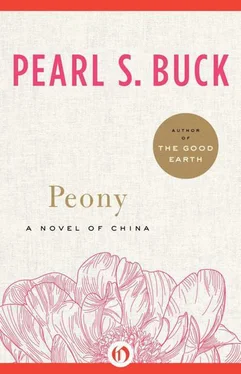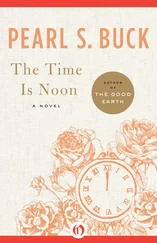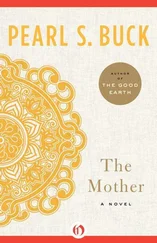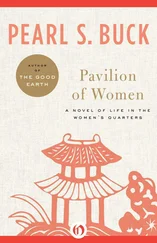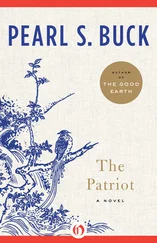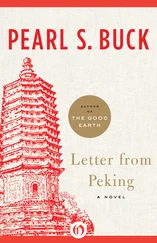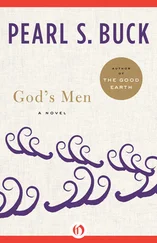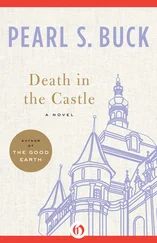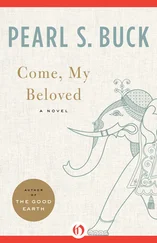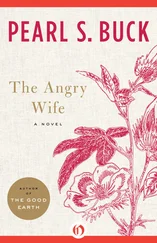Pearl Buck - Peony
Здесь есть возможность читать онлайн «Pearl Buck - Peony» весь текст электронной книги совершенно бесплатно (целиком полную версию без сокращений). В некоторых случаях можно слушать аудио, скачать через торрент в формате fb2 и присутствует краткое содержание. Год выпуска: 2012, Издательство: Open Road Media, Жанр: Современная проза, на английском языке. Описание произведения, (предисловие) а так же отзывы посетителей доступны на портале библиотеки ЛибКат.
- Название:Peony
- Автор:
- Издательство:Open Road Media
- Жанр:
- Год:2012
- ISBN:нет данных
- Рейтинг книги:3 / 5. Голосов: 1
-
Избранное:Добавить в избранное
- Отзывы:
-
Ваша оценка:
- 60
- 1
- 2
- 3
- 4
- 5
Peony: краткое содержание, описание и аннотация
Предлагаем к чтению аннотацию, описание, краткое содержание или предисловие (зависит от того, что написал сам автор книги «Peony»). Если вы не нашли необходимую информацию о книге — напишите в комментариях, мы постараемся отыскать её.
Peony — читать онлайн бесплатно полную книгу (весь текст) целиком
Ниже представлен текст книги, разбитый по страницам. Система сохранения места последней прочитанной страницы, позволяет с удобством читать онлайн бесплатно книгу «Peony», без необходимости каждый раз заново искать на чём Вы остановились. Поставьте закладку, и сможете в любой момент перейти на страницу, на которой закончили чтение.
Интервал:
Закладка:
It was a prosperous house, and David was one of the city’s honored elders and Peony was its wise woman. Their age fell gently upon them all.
In the city, the synagogue was now a heap of dust. Brick by brick the poor of the city had taken the last ruin of the synagogue away. The carvings were gone, too, and there remained at last only three great stone tablets, and of these three, then only two. These two stood stark under the sky for a long time, and then a Christian, a foreigner, bought them.
This made an uproar in the city. The son of David’s fourth son, surnamed Chao, had sold the stones. Upon his head the wrath of the city’s governor fell. “How is it you, unfilial son, have sold the stones of your ancestors to a Christian foreigner?” the governor demanded. “He must return them, lest he take them away from our country to his own and the dead of your house rise up to reproach us.” And he ordered his guards to throw this Chao into jail.
But Chao had the blood of Madame Ezra still strong in him and he shouted through the bars, “Though you heap a fortune on me, I will not ask this Christian to give back the stones! They belonged to our religion, which has come to an end in this land, but his religion sprang from ours and let him keep the stones.”
Now this Chao was supported by all that family of Chao which had sprung from the loins of David ben Ezra, and they pointed out to the governor of the city that for scores of years the stones had stood under snow and rain and sun until they were cracked, and none had protected them. Why then should there be complaint if they were sold?
There was no one to make compromise until it was remembered in the city that the Mother Abbess had known the family well, and so the governor sent his messengers to her and she received them at the gate of the nunnery, since it was the law that no man could step beyond the threshold.
Peony was very old now, but her mind was clear and cool and she heard the messengers. Then still standing she gave out wisdom, and these were her words:
“This one surnamed Chao was a lively child and he grew into the man you know. It is his nature to spend his life in the jail unless a way is found for him to come out without leaving his pride behind him. I knew his father before him and his father before that. I will tell you the way: The foreigner shall keep these sacred stones he has bought but he shall not take them from our city. Let him set them before his own temple, and let him build a pavilion over them to preserve them for the generations to come.”
The men looked at one another and scratched their jaws and acknowledged that the Mother Abbess was wise indeed, and they thanked her and went away.
Even as Peony had said it was done. There in the new temple the stones stand to this day, under the shelter of the pavilion. Upon them are carved the ancient words “The Temple of Purity and Truth,” and beneath the words are carved the history of the Jews and their Way, and it is there said, “The Way has no form or figure, but is made in the image of the Way of Heaven, which is above.”
When Peony had returned to her cell she pondered long. Her memory brought back to life all the story of the House of Ezra, in which her own life had been entwined by some chance, for some purpose she did not understand, except that she knew that whatever happened was Heaven’s will. That strong and powerful family, the seed of Israel and Ezra and David, were they one day to be no more, even as the synagogue was gone, which their ancestors had made for a temple of their God? Had she done evil when she had enticed David away from Leah to marry Kueilan?
Long she pondered, and as often happened to her in her great age, the answer came to her. She had not done wrong, for nothing was lost. “Nothing is lost,” she repeated. “He lives again and again, among our people,” she mused. “Where there is a bolder brow, a brighter eye, there is one like him; where a voice sings most clearly, there is one; where a line is drawn most cleverly to make a picture clear, a carving strong, there is one; where a statesman stands most honorable, a judge most just, there is one; where a scholar is most learned, there is one; where a woman is both beautiful and wise, there is one. Their blood is lively in whatever frame it flows, and when the frame is gone, its very dust enriches the still kindly soil. Their spirit is born anew in every generation. They are no more and yet they live forever.”
Afterword by Wendy R. Abraham, Ed.D
THE CHINESE JEWS OF Kaifeng represent one of the most obscure, and one of the most fascinating chapters in the annals of the Jewish diaspora. Throughout Peony, interwoven within the fictional events surrounding the House of Ezra, Pearl S. Buck has managed to convey with historical accuracy the Jews at the twilight of their existence in Kaifeng — a people at once assimilated and yet set apart from their neighbors.
That the daughter of Protestant missionaries could so effectively impart the depth of feeling and concern behind a Jewish family aware of its imminent spiritual demise, yet deeply cognizant of its obligation to carry on the traditions of its forefathers in a foreign land — all the while exhibiting authentic Chinese sensibilities — is a testimony to the greatness of the writer herself.
Origins of the Chinese Jews
The actual history of the Jews in China dates back at least to the 8th century C.E., when Jewish merchants and traders from Persia and India travelled overland along the Silk Road to trade in the Middle Kingdom during the Tang dynasty (618–906 C.E.). Testimony of this early history exists in bits of archaeological evidence which came to light at the turn of this century. A Judeo-Persian business letter, dating to 718 C.E., was discovered in 1901 by the archeologist and Orientalist Sir Marc Aurel Stein, along the Northern caravan route of the Silk Road. Nine years after this discovery, a Selichah, or Hebrew penitential prayer sheet, was unearthed in the Dunhuang Caves of Gansu Province, along what was the Southern Caravan route of the Silk Road. Dating to 708 C.E., it represents the earliest known Hebrew manuscript still extant. What makes these two pieces remarkable is the fact that they were made on paper, which at the time was only made in China, proving a Jewish existence in Chinese territory at least as early as the 8th century.
Some scholars theorize that the Jews came to China by sea, noting the various coastal Jewish communities which sprung up in Canton, Hangzhou, Yangzhou and other cities. Of these, Kaifeng was the grandest, with its opulent synagogue dating to 1163 in what was then the capital of China.
Early information about the Jews in China is scanty. Between the 9th and the 14th centuries, well-known Arab travellers and historians such as Abu-Zaid and Ibn-Battutah reported the presence of Jews in China. Although these constitute the first available observations noted by Westerners, they said little about the daily life of the Jews themselves. Pointing to Moslem countries for the origins of the Chinese Jews — in particular Persia, they confirm that they lived in the same major cities as did the Moslems, having arrived approximately the same time and in the same manner. Indeed, the Chinese often confused the Jews for Moslems, calling the former “blue capped Moslems”, since the real Moslems always wore white skull caps, while the Jews wore blue. (In Peony, David is depicted at one point, as donning a blue silk cap. This was not a chance color chosen by Pearl S. Buck.)
Early European travellers in China during the Yuan dynasty (1280–1367) also reported sighting Jews. Remarkably, Marco Polo made it a point to mention in his memoirs that the Mongol ruler Kublai Khan (for the Yuan was a “foreign” dynasty), celebrated the festivals of the Moslems, Christians and Jews. During the same period European missionaries such as Andrew of Perugia reported Jewish resistance at attempts to convert them, or to be otherwise swayed from their convictions. It is clear that through the 14th century, at least, the Jews in China had contact with other foreigners, and that their religious life and identity as Jews remained intact, undisturbed and unchallenged by the exceptionally tolerant Chinese people and government.
Читать дальшеИнтервал:
Закладка:
Похожие книги на «Peony»
Представляем Вашему вниманию похожие книги на «Peony» списком для выбора. Мы отобрали схожую по названию и смыслу литературу в надежде предоставить читателям больше вариантов отыскать новые, интересные, ещё непрочитанные произведения.
Обсуждение, отзывы о книге «Peony» и просто собственные мнения читателей. Оставьте ваши комментарии, напишите, что Вы думаете о произведении, его смысле или главных героях. Укажите что конкретно понравилось, а что нет, и почему Вы так считаете.
